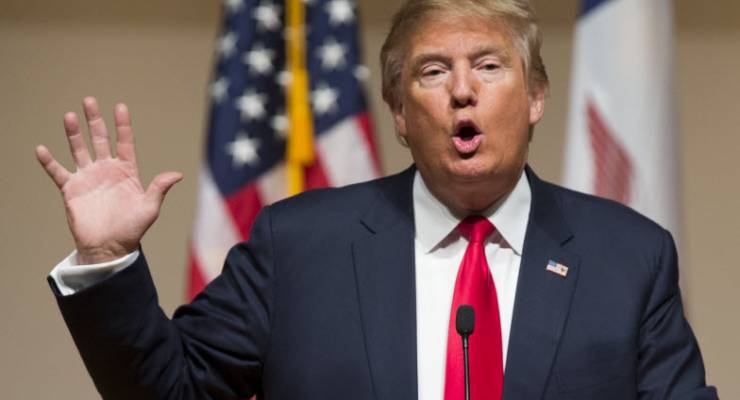
There was ominous news from the Chinese government last week when it revealed that the country’s only aircraft carrier, the Liaoning, a refitted vessel purchased from Ukraine, had begun patrolling the seas with flotilla of ships.
The lunatic regime of Kim Jong-un in North Korea and its nuclear arms ambitions aside (and more of this in due course), China is, of course, the main protagonist in the Asia-Pacific region as it seeks to carve out its own sphere of influence in its traditional backyard, most notably with its building of artificial islands in the South China Sea, which it is now stocking with military machinery and officials.
None of this is news, of course — merely part of the rapid escalation of power projection by China under its supreme leader Xi Jinping, who is preparing to be named for a second five-year term as General Secretary in October or November this year when the ruling Communist Party meets for its five-yearly congress. But now a new and highly volatile element has entered the equation: the imminent inauguration of Donald Trump as US president.
This means that for the first time since, arguably, the Vietnam War, the Australian government is facing a deep and very serious foreign policy equation and, given various “worser” case scenarios, a potential historic realignment.
[China rising: in the age of Trump, Asia must lead]
The US is Australia’s greatest and most powerful ally, and since the fall of the Berlin Wall signaled the end of the Cold War, Australia has more or less followed the lead of the US. This was underscored by the Howard government’s decision to follow the US into its misadventures in Afghanistan and Iraq with more recent support for action in the Middle East under the Abbott government. But there is uncertainty over the foreign policies that will be followed by the Trump administration.
But for Australia, the greatest unknown is precisely how Trump will deal with China. Ahead of Trump’s election in November, the loose alliance around the US in the Asia Pacific had already been fractured by the official rejection of the US by the Philippines’ murderous president, Rodrigo Duterte, in favour of closer relations with China. Still, it remains to be seen how this will play out in reality as the US still has troops based in the country.
Trump has made bellicose noises about North Korea and also appears to be using Taiwan as a bargaining chip, and there will be no concrete signs of his real intentions of whether he intends to convert his rhetoric on an effective trade war with China into action until he officially moves into the White House on January 20.
China itself is already at work currying favour with Thailand, long the US’ main ally in mainland south-east Asia and with the troubled — and troubling — regime in Malaysia.
[Australia is caught between a populist in China and a demagogue in America]
In recent years, Australia has shown some willingness to have, well, a niggle — one supposes it would be called — at China. In 2014, Foreign Minister Julie Bishop carpeted the Chinese ambassador over China’s introduction of an Air Defence Identification Zone over the East China Sea, where it disputes sovereignty over a bunch of rocky islands with Japan. She was duly paid back by an unprecedented public dressing-down by her counterpart Wang Yi when she visited Beijing a few months later. In some circles that would be a badge of honour, but the timid Australian government is unlikely to see it that way.
The incoming Trump administration’s closer ties to Russia — which the outgoing Obama White House, on the back of information from US intelligence agencies, has sanctioned because of cyber attacks and actions during the election — represents a serious issue for allies of the US.
Late last year, Bishop had another go at China. Well, sort of. Bishop highlighted the practice of countries putting military equipment on artificial islands in the South China Sea — without actually naming China. Vietnam is now following China’s lead by arming up a South China Sea outpost in at least one spot and a more belligerent — although still officially neutral — Indonesia, where anti-Chinese feeling (a serial historical problem) has raised its head in some of the recent Jakarta riots, is also now in play as an issue with defence ties also suspended, at least in part.
There are plenty of commentators arguing that Australia needs to take a wholesale look at its position vis-a-vis the US in the region; others say “not so fast”. So there’s something of a collective holding of breath.
All of this comes as Bishop and her recently appointed department head Frances Adamson — plucked from the Prime Minister’s Office after only six months and barely a year after she left her post as Australia’s ambassador to China — are embarking on the task of crafting a white paper on foreign affairs.
That task has gotten immensely more daunting.








Crikey is committed to hosting lively discussions. Help us keep the conversation useful, interesting and welcoming. We aim to publish comments quickly in the interest of promoting robust conversation, but we’re a small team and we deploy filters to protect against legal risk. Occasionally your comment may be held up while we review, but we’re working as fast as we can to keep the conversation rolling.
The Crikey comment section is members-only content. Please subscribe to leave a comment.
The Crikey comment section is members-only content. Please login to leave a comment.